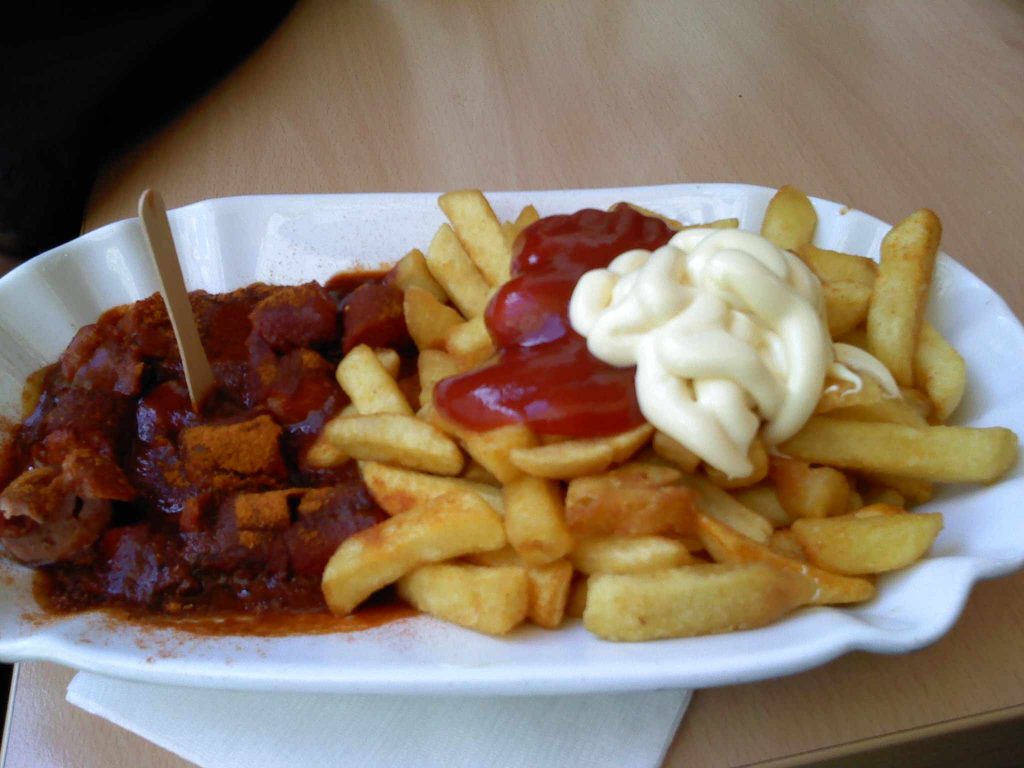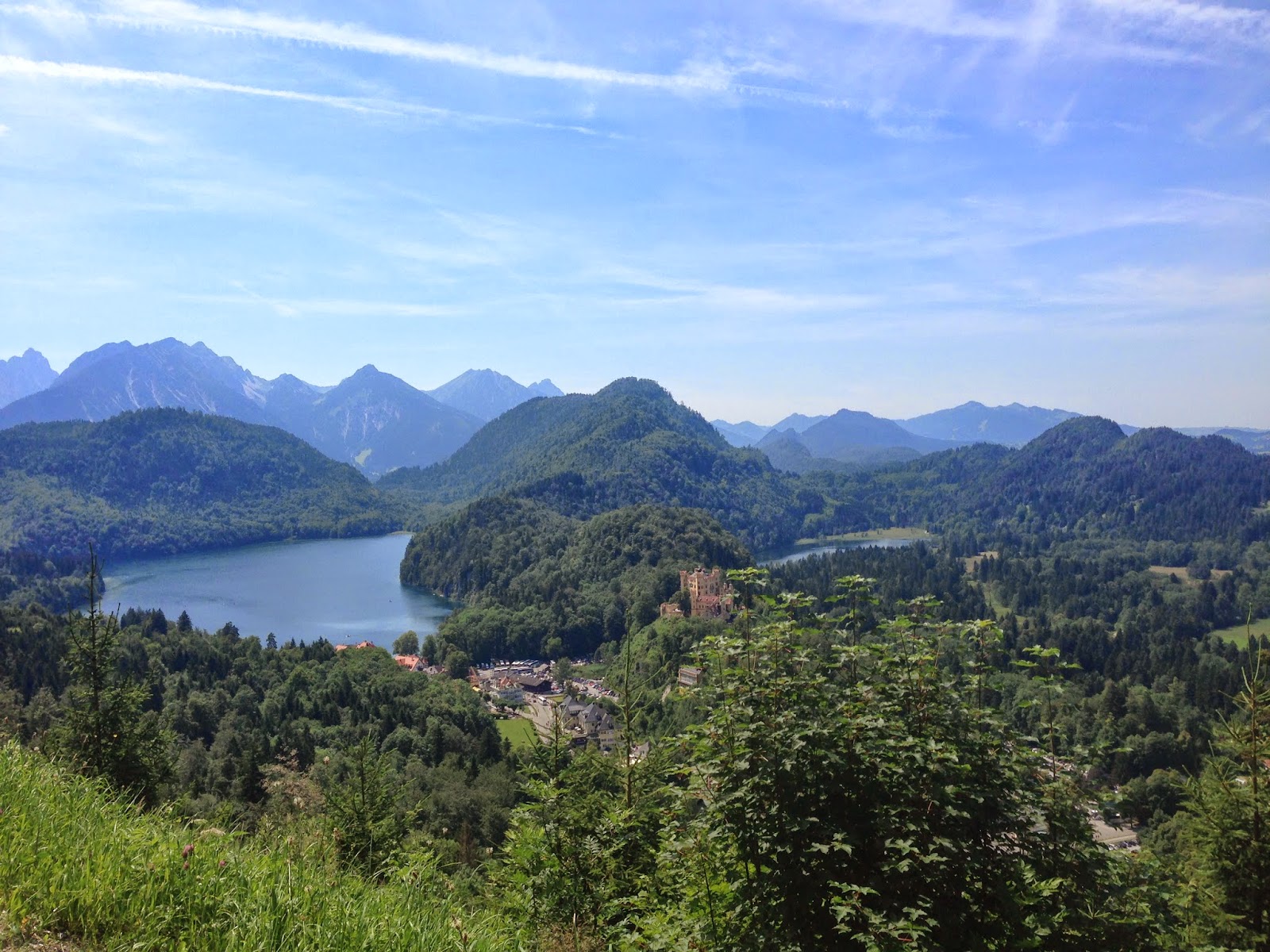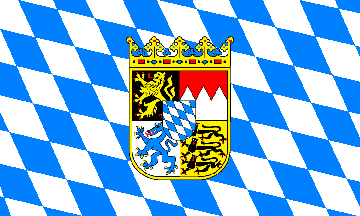 |
| bratwurst im brötchen. |
BRATWURST This should totally be a given, so I'm just going to say it and leave it at that: German bratwurst rocks every other bratwurst. As it should.
BUTTER The first time I bought butter here--and it was one of the first thing I bought--I was simply trying to stock my refrigerator. The label read Deutsche Markenbutter, which meant very little to me other than the fact that it was, indeed, butter. However, it turned out to the best and creamiest butter ever. {I had had something like it before, once, in Texas. Central Market has a "European Style Butter" available, and it is similar.} I now buy nothing else. Some Googling has informed me that Deutsche Markenbutter is first-class German butter and is required to be produced in a dairy and be made either from milk or directly derived from cream. It must have four out of five stars and be tested every month to make the grade. It. Is. Worth It.
 |
| currywurst mit pommes. {internet photo} |
DESSERT This mostly applies to cakes, since they're the dessert of choice and Germans like a lot of them. It's not that they're particularly special--although I think it is worth noting that a larger percentage of Germans seem to be knowledgeable about cake-baking than their American counterparts--it's that they're not particularly sweet. I'm not the biggest fan of most American desserts because they give me a sugar headache after three bites. German desserts understand the value of taste over sugar, and the result is dessert I can actually enjoy. {And yes, those of them that have been to America have negative opinions about the insane amount of sweetener we apply to our desserts.}
DÖNER Also known as a kebab {or a gyro, back in the States}, the prevalence of döner is the result of a huge influx of Turkish immigrants after the second world war. {Germany needed laborers desperately and enacted a visiting worker program that encouraged this.} Now there is döner available on every street--especially in Berlin, but also in Würzburg, and it's the best thing after a long and/or hungry day. So much food in one pocket of bread.
 FRUIT & VEGETABLES I'm particularly speaking of the strawberries and tomatoes. When I first arrived in Würzburg, there were strawberries everywhere, in all the stands. I had to try them, and I wasn't disappointed. But then...the tomatoes. Let's talk for a moment about tomatoes in the States. Home-grown tomatoes are red through-and-through, and they taste like heaven. But when you buy them from the grocery store, chances are that they're not deep red on the outside and that their middles are white and dry. {If you've never had home-grown tomatoes and are content with those from the store, I pity you.} Well. The tomatoes from the German grocery stores are as red and juicy and delicious as American home-grown ones. They're so good that Miquela and I would even eat them as-is {the way you eat an apple}. Gonna miss the tomatoes.
FRUIT & VEGETABLES I'm particularly speaking of the strawberries and tomatoes. When I first arrived in Würzburg, there were strawberries everywhere, in all the stands. I had to try them, and I wasn't disappointed. But then...the tomatoes. Let's talk for a moment about tomatoes in the States. Home-grown tomatoes are red through-and-through, and they taste like heaven. But when you buy them from the grocery store, chances are that they're not deep red on the outside and that their middles are white and dry. {If you've never had home-grown tomatoes and are content with those from the store, I pity you.} Well. The tomatoes from the German grocery stores are as red and juicy and delicious as American home-grown ones. They're so good that Miquela and I would even eat them as-is {the way you eat an apple}. Gonna miss the tomatoes.ICE CREAM In downtown Würzburg, a person has ample opportunities to eat ice cream. Very thick and creamy ice cream. In a cone. One scoop = one Euro. I'm pretty sure the only place you can get "ice cream" that cheap in the US is the Wendy's dollar menu. Not to mention the flavors...the other night I happened upon a basil-lime ice cream. Yes, yes it was delicious.
MÜSLI Okay, so this breakfast cereal is available in the States. I even have a spectacular recipe for it back home {it's been my staple breakfast for a good four years or so}. But it's been so cool to eat müsli in the country of its invention! What is müsli? It's an oatmeal-based cereal--think granola but untoasted or syruped--with nuts and dried fruits mixed in. Techincally, müsli is simply the German word for cereal, but after the introduction of American breakfast cereals, it now applies only to this kind.
PIZZA German pizza has a different style than in the States {so much so that those of my labmates who have tried American pizza are extremely unimpressed}. The crust is thinner, and the sauce has different spices and flavors. My favorite is the Margarita pizza. It's just a fancy name for a cheese pizza, but it's so tasty that you don't miss the toppings.
POMMES After the United States' loss to Belgium in the World Cup, we were discussing the for-fun attempt of renaming "Belgian waffles" to "Freedom waffles." I commented that there had been similar renaming of "French fries" to "Freedom fries" about ten years ago when there were international policy differences between the US and France. "We don't have that problem," said the Opinionated Romanian. "We just call them pommes."
 |
| currywurst mit pommes {done right}. {internet photo} |
Though pommes is technically just the German word for French fries, it's taken on a new meaning within our Albino Squirrel group. Because there's a few differences in the method of eating German French fries compared to American. First off, you must think thick fries...not those thin things you get at McDonald's. Second, not only can you complement them with ketchup, but mayonaisse is perfectly normal {and it's so good}. Third, the ketchup and mayonaisse often {but not always} go on top of the fries...not beside. And fourth, they're eaten with a fork more than half the time. This is pommes, and I'm going to miss it.
PRETZELS Everywhere you go, there is a bakery. And every bakery has pretzels. Good pretzels. Really good pretzels. Really good and warm pretzels. For 0.65EUR. Need I say more?
RADLER A post about German food and drink is not complete without Radler. Someone has to mention it, and since I'm over-age in both the US and Germany, I'll do the honors. Radler is a half-and-half mixture of beer and carbonated lemonade {basically, Sprite}. It's perfect for those of us who aren't particularly fond of beer or its effects {i.e. me}, and I wish the US had a similar low-alcohol-content, non-bitter, beer-like drink. May have to fix that. But Radler is super-popular here; like the apfelschorle, it is acceptable to both buy it pre-made or mix it oneself.
 |
| bratwurst und sauerkraut. |
SAUERKRAUT Pickles are my favorite food, so it shouldn't come as any surprise that I've become quite a fan of what is basically pickled cabbage. So good, and I might have to figure out how to make my own come Texas-time.











































